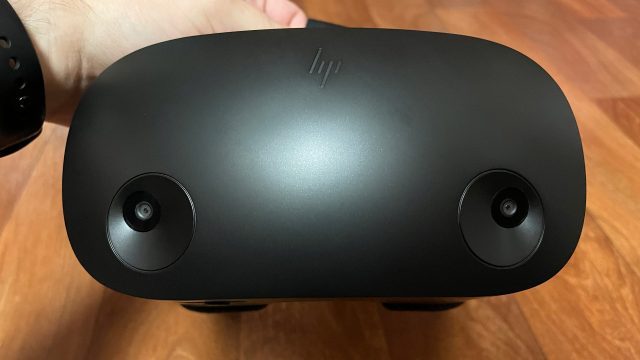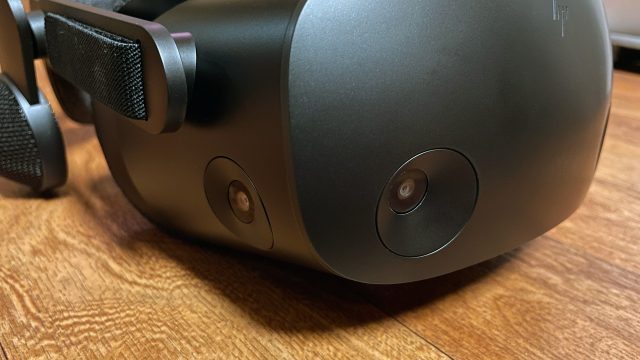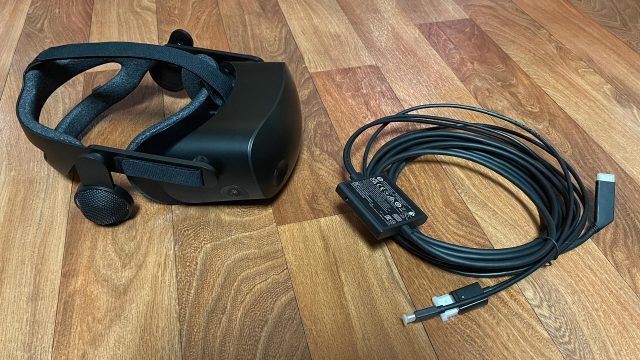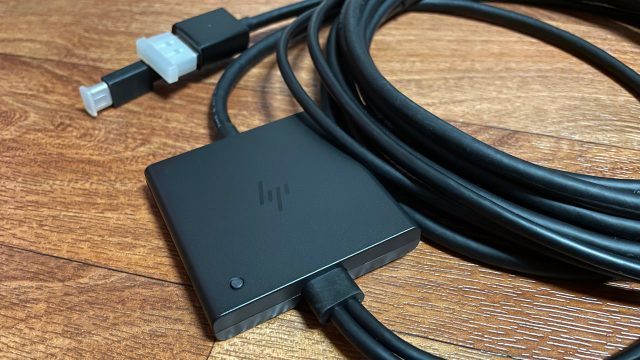Tracking Coverage

In addition to adding a spacer to offer two eye-relief settings, HP also says it made some adjustments to the cameras on Reverb G2.1 to improve tracking coverage. The company estimate an improvement of 30% area, specifically “resolving blind spots above and below the waist.”
This one is more difficult to objectively test, but as I prodded the limits of the tracking area on both the G2 and G2.1, it was clear to see that coverage on G2.1 was better, most notably in the vertical direction.
Whereas with the original G2, it was easy to find the point of tracking failure above my head when the controller was even still within the visible field-of-view, with G2.1 the tracking didn’t fail until it was out of sight off the top of the field-of-view.
Similarly, when dropping the controllers down toward my waist, tracking on Reverb G2.1 held for noticeably longer than the original G2.

This has reduced but not eliminated an annoyance on the original headset: seeing the tracking regularly fail when your hands are down low and you’re using a long implement like a laser pointer in a menu. Now that happens less often in menus, and in moment-to-moment gameplay it’s less likely that you’ll notice it.
Coverage out to the sides remains strong thanks to the headset’s side-mounted cameras; I didn’t notice any improvements on the sides (but then again I never noticed issues with side coverage it in the first place).
As far as I can tell, the tracking coverage change to Reverb G2.1 is a straight improvement with no downsides. Tracking coverage is still not quite up to par with something like Quest, but it’s better than it was.
At this point I might even go as far as saying that tracking coverage on Reverb G2.1 is good enough for the vast majority of VR experiences. If only HP could improve the headset’s tracking latency overall (and some WMR-related finickyness) it would be hard not to recommend Reverb G2.1 as the best value PC VR headset on the market.
Telling the New Reverb G2 Apart From the Old

We’ve reached out to HP to ask how one could identify the new Reverb G2 from the original, because so far we haven’t found any sure-fire way to tell them apart from the outside. We looked at the model number, FCC ID, and other informational markings on the headset and couldn’t find any clear differentiator.
If two headsets came out of a sealed box in front of you, telling them apart would be as simple as seeing which one has the spacer in the facepad.
But in an aftermarket situation it would be much more difficult because you could be looking at the original G2 headset which happens to be using the new facepad, or the new headset which happens to be using the original facepad. In either case, it would be essentially impossible to know which of the two had the improved cameras.

Another clue would be that the new Reverb G2.1 has a slightly larger breakout box on its cable (with a small button) than the original G2… but again, the cables are removable so you could be looking at the original G2 headset which happens to be using a new cable or vice versa. We’re also not sure if the cable with the larger breakout box is brand new for the Reverb G2.1, or if the cable shipped out previously with the older headsets before the other tweaks.
In any case, we hope HP will be back to us with a reliable method to tell the old from the new.
Disclosure: HP provided Road to VR with a Reverb G2 headset.






